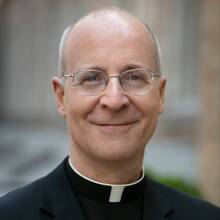 Last weekend I caught Robert Redford's new film "The Conspirator," which uses the case of Mary Surratt (a Catholic, by the way, which the film notes) and her complicated involvement with the assassinaton of Abraham Lincoln to draw out some modern-day parallels. John P. McCarthy provides and incisive review of the film in the latest online Culture piece.
Last weekend I caught Robert Redford's new film "The Conspirator," which uses the case of Mary Surratt (a Catholic, by the way, which the film notes) and her complicated involvement with the assassinaton of Abraham Lincoln to draw out some modern-day parallels. John P. McCarthy provides and incisive review of the film in the latest online Culture piece.
Factually accurate historical dramas, you might assume, would be a boon to a filmmaker aiming to impart a profound lesson to a wide audience, especially when his message isn’t ideologically jarring or overtly political.
In Robert Redford’s Civil War movie “The Conspirator,” however, the reluctance to amend or stray from the historical record, or to be provocative in any way, almost backfires. Preserving the ambiguity regarding Mary Surratt’s role in the plot to assassinate Abraham Lincoln, while admirable in many respects, threatens to undermine what amounts to a decent courtroom drama. Because Mrs. Surratt’s fate is over-determined (and known to non-historians who’ve seen the trailer), the narrative tension risks being minimized by a clash between concepts.
Granted, those ideas—let’s call them justice and peace—are giants. Should the legal rights of one citizen be trampled upon in the sincere hope of stopping bloodshed and helping ensure a nation remains intact? “No” is the answer offered by our Judeo-Christian heritage and “The Conspirator,” which dramatizes this hinge of American democracy in a safe, moderately edifying and entertaining manner. Encouraging us to consider seriously the opposite response would be a more impressive feat, but the film raises then squanders this intriguing possibility.
From a historical perspective, depicting the divisions in the United States after the Civil War is the film’s main achievement. It may come as a surprise to many viewers. Cinematically, the understated production is respectable if not scintillating. Aside from a few anachronistic-sounding lines, period authenticity isn’t a problem. Due to a color process called Autochrome, the cinematography has a gauzy, milky look that, while excessive, matches the air of factual indeterminacy. The acting is first-rate. (Although there is some irony in two of the film’s staunchest defenders of American ideals being portrayed by a Scot, James McAvoy, and a Brit, Tom Wilkinson.)
The conspiracy that takes up the majority of screen time is not the plot to topple the Union by killing Lincoln, his Vice President, Andrew Johnson and Secretary of State William Seward; but rather the government’s alleged railroading of Surratt (Robin Wright), one of eight people captured and tried for the assassination. The mother of John Surratt, a Confederate courier and associate of John Wilkes Booth, she owned the D.C. boarding house where the accused, including Booth, congregated.







